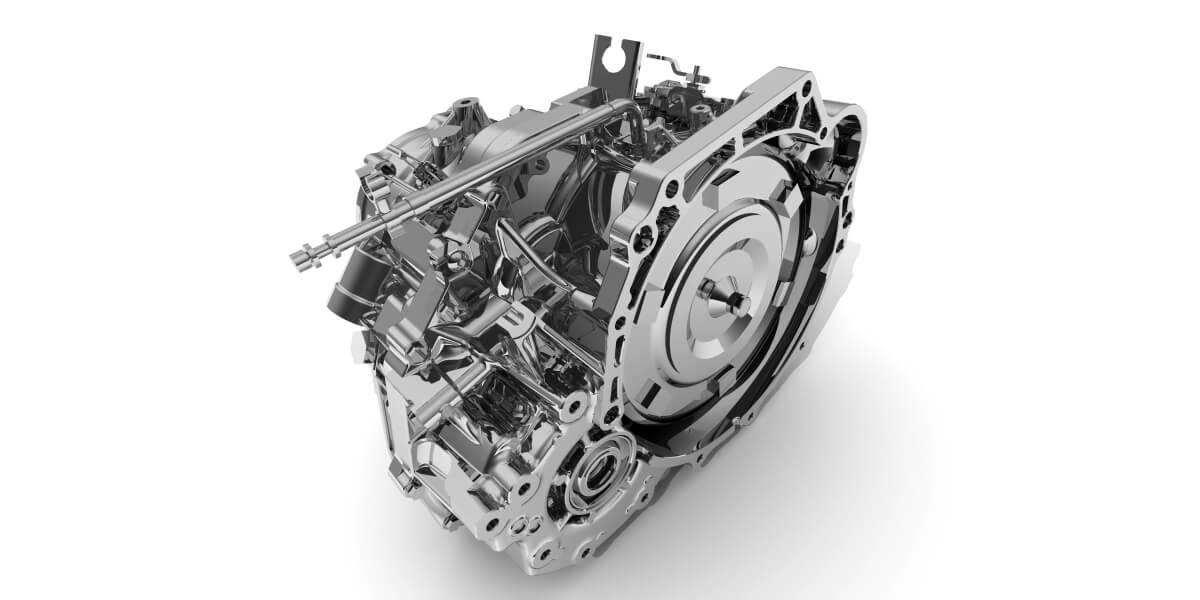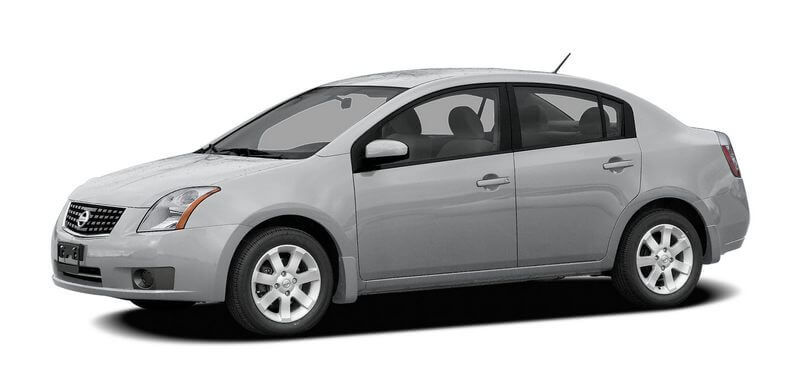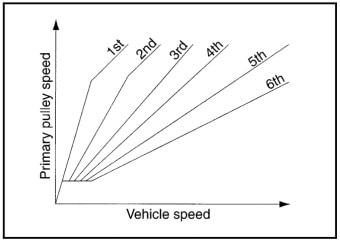
Transmissions are an integral part of any motor vehicle with an internal combustion engine. The gears are there to maximize the potential of the motor, give you strong acceleration, and high top speed. Thanks to gearing, our vehicles can easily overcome steep inclines, even those with small 4-cylinder engines. Oh, and they are not only important for giving you forward motion, but also for braking.
Regardless of the type of transmission in your car – manual or automatic, you’re probably familiar with gears. Manual transmission fanatics might know a tad more, simply because they need to change the gears themselves. Of course, you can also force modern automatics into manual mode if you are so inclined. Irrespective of that, every transmission changes gears and you can feel that – the revolutions of the engine will drop.
Well, that’s the case with “almost” every transmission. What if I tell you that there is a gearbox that constantly changes gears and you will never notice it? It’s called a CVT transmission, which stands for Continuously Variable Transmission. Now, many enthusiasts cringe at the thought of a CVT, something that I will elaborate in detail.
I think, however, that the CVT’s are very cool and that there is a place for them in the automotive world. Thanks to CVTs, modern vehicles consume less fuel and produce fewer emissions. Moreover, CVT transmissions are more usable to drive in the real world – you’re always in the right gear. And, above all, they are very easy to maintain, cheap, and reliable.
CVT transmissions are also interesting in the way they work. They surely sound complex – a transmission that constantly changes gears without you noticing? Well, in mechanical terms, CVT’s are much simpler than normal gearboxes, both manual and automatic. I mean, there is a reason why Toyota, Honda, Nissan, and Subaru use CVT in their model lineup.
That being said, let’s have a deeper look at CVT transmission in cars and debunk some misconceptions about them. I will also include some personal experiences to give you a clearer picture of the technology.
 2008 Nissan Sentra - one of the many cars equipped with a CVT transmission
2008 Nissan Sentra - one of the many cars equipped with a CVT transmissionHow Does a CVT Transmission in Cars Feel?
Well, a CVT vehicle behaves the same as one with a normal automatic gearbox. You put the stick into “D” to go forward, “R” for reverse, and “P” for stationary. Then, the transmission takes care of changing the gears for you. Some modern CVTs will let you change gears yourself, but I doubt most people will actually use that feature.
Driving with a Regular Automatic Transmission
However, that’s where CVTs and normal automatic transmissions cross their paths. Automatic gearboxes change already predetermined gears. Usually, modern automatics come with six gears, but manufacturers increasingly use 7-speed, 8-speed, 9-speed, and even 10-speed transmissions.
Whatever the case, you will be able to tell when the transmission changes gear, just like with a manual one. More to the point, the engine revolutions drop when the transmission changes gear. Furthermore, when the transmission is in-gear, the engine revolutions rise to move you forward.
That is how most people experience acceleration, apart from feeling the G-forces. Then rpm increases and then, everything repeats after the transmission changes to another gear.
Driving with a CVT
With CVTs, there is no way to tell when the transmission changes gears because it changes them constantly. Here, the engine is held at constant revolutions, usually in its optimal power band, near the highest-torque.

When you press on the gas pedal in a CVT vehicle, the revolutions of the engine will immediately rise. Then, they still stay at around 4,000 RPMs (in most vehicles), while the CVT will constantly change the transmission ratio.
Press on the gas pedal very hard, and the engine will hold the revolutions near the red line for maximum acceleration. That’s why, at first, cars with CVTs give the impression of a worn-out clutch. However, that’s normal – it’s just the transmission going into higher ratios, constantly.
Overall, CVT transmissions are more comfortable – there is no cut off in power. The acceleration will be completely linear, just like in an electric car or truck (yes, electric pickup trucks are just around the bend!). However, because the engine stays constantly at higher revolutions, there will be a constant buzz in the cabin. Cars with CVTs are usually louder during hard accelerations because the engine holds at high revolutions for longer. If you drive smoothly, though, CVTs can be very quiet and supremely comfortable.
To cut the constant buzz of the engine, some manufacturers employed predetermined gears in their CVTs. Toyota even employed mechanical first gear for a better acceleration of the line. As a result of that, CVTs feel more like automatics, but even then, you will certainly get the rubber-band feeling.
Why Enthusiast Don’t Like CVT Transmissions?
There is one simple reason – you don’t have much control over the vehicle. With normal transmissions, you can hold onto the gear and control the vehicle with the gas pedal. For example, you can drift through a corner easily in second gear. Or, control how the car handles through a corner with the gas pedal.
With a CVT vehicle, every time you press on the gas pedal, the ratio will start to change. You can’t hold onto a gear. As a result of that, very aggressive driving into the corners is very hard with a CVT. Not impossible, of course, but the learning curve is very high. Well, at least in my experience.
That being said, there is no single sports car with a CVT. Manufacturers know that this transmission doesn’t work very well for enthusiast-level driving. You’ll mostly find CVTs in passenger cars, such as Corolla, Almera, Civic, etc. For those vehicles, CVTs work completely fine!

How Does CVT Transmissions Work?
Unlike traditional transmissions, there are no gears in a CVT. Instead, CVTs have a pulley, toroidal, or hydrostatic system that can vary between the lowest and highest transmission ratio. Within these final ratios, there is an infinitely large number of in-between “gears”.
How is that possible? Well, let’s say that the lowest transmission ratio is 1 and the highest is 2. According to mathematics, there is an infinite number of variations between 1 and 2. You can always just add a number after the decimal point and get a new variation. So, the next time someone asks you how many ratios are there in your CVT, you can say infinite!
How CVTs Change Transmission Ratios?
But, let’s get back to mechanics. The most common type of CVTs has a pulley system. These transmissions have only three parts – a belt (metal or rubber), a driving pulley (engine), and a driven pulley (driveshaft). The pulleys inside a CVT have a variable diameter – that’s how you get all those ratios. They look like two cones and they always face each other, with the belt in-between.

To change ratios, the distance between cones inside the pulley’s changes, both on the driven and driving pulley. When the vehicle is stationary, the belt in the driving pulley is at the lowest point and the cones are farther from each other. On the driven pulley, which is connected to the crankshaft, it’s the opposite. That is low gear.
When you start accelerating, the cones in the driving pulley come closer. Conversely, those on the driven pulley move away from each other. All of this happens constantly, that’s why it is called a Continuously Variable Transmission.
When you reach the highest speed, or just cruise on the highway, the roles of the pulleys are reversed. Now the cones in the driving pulley are farther from each other, while those in the driven pulley are closer. At that point, the transmission is at the highest gear.
CVT Transmission vs Planetary Automatic Transmission
Most of the people reading this are probably familiar with a planetary transmission. Hey, it’s in most cars sold in the USA! These gearboxes are known for their smooth operations and are very easy to drive. However, they are also heavy, very complex, and increase fuel consumption.
To better present you how a CVT transmission compares, here are all the advantages and disadvantages.
Pros:
- CVTs are always in the right gear. As a result of that, CVTs react faster to accelerating input. For example, a car with a CVT is better of overtaking and better for driving on steep inclines. You can never catch a CVT in the wrong gear. With regular automatic, 2nd gear might be too low for driving on an uphill, and 3rd too high. With a CVT, there is a gear between those two.
- Thanks to keeping the engine in the optimal power band, CVT will lower the fuel consumption. Moreover, this also means lower emissions.
- CVTs are very reliable due to the simple construction. Also, there is usually no need for expensive maintenance on these transmissions.
- Smooth driving experience when accelerating – there is no drop in power.
- CVTs are much lighter compared to standard automatic transmissions, which further improves performance and efficiency.
Cons:
- There is a constant buzz from the engine during harder acceleration. For most people, this is the biggest disadvantage they associate with CVTs.
- Harder to control the vehicle during aggressive driving.
- CVTs won’t work very well on more powerful vehicles – they can’t handle a lot of torque.
- Not a lot of mechanics know how to work on CVTs. If the transmission breaks, the only choice is to visit an expensive certified service or replace the transmission altogether.
In Brief...
Despite the animosity against CVT transmission in cars, there is nothing inherently wrong with owning one. Actually, in my experience, smaller economy cars are better suited to a CVT transmission. It’s lighter, it gets the most from small engines in terms of power, and doesn’t require a lot of maintenance. Also, CVT vehicles consume less fuel than both manual and automatic transmission vehicles.
Now, of course, cars with a CVT won’t light your heart on fire. I won’t say that they are boring to drive – there are some examples where CVT works well for performance driving. However, a car with a manual or an ordinary auto will be more fun, especially through the corners. More importantly, you will have more control as a driver.
Let’s be honest, though – the percentage of enthusiasts among drivers is very small. For the majority of drivers, CVT transmissions will be an excellent choice. Accordingly, if you plan to purchase a new car soon, don’t let a CVT transmission change your mind.
And even if you don’t trust my judgment, be sure to give this transmission a go via a test drive. You might like it more than a regular automatic. I certainly know people that do!
